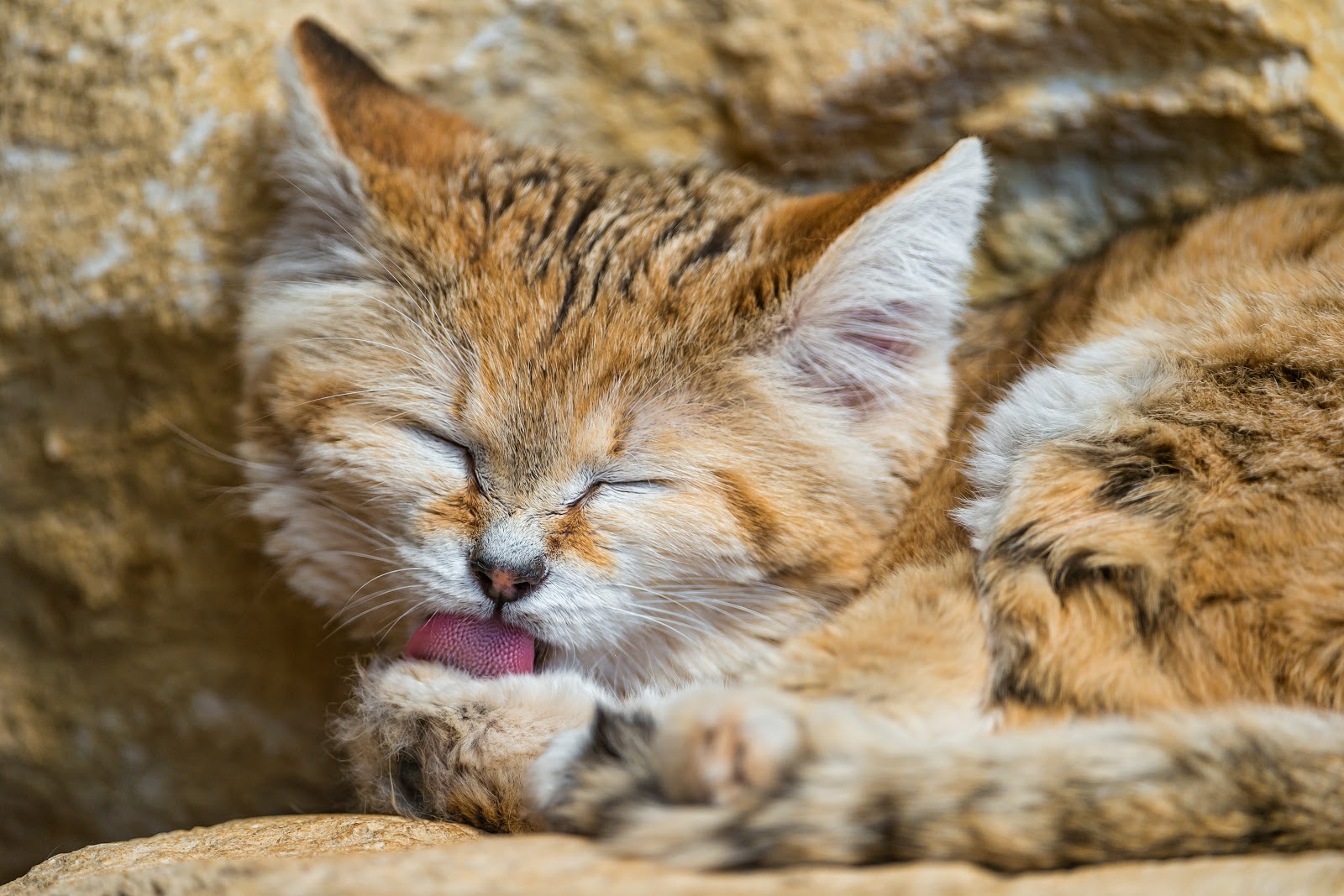Desert Sand Cat Facts

Sand cats hail from the dry deserts of Africa and Asia and they can be prone to respiratory infections in most households.
Desert sand cat facts. Reddish line runs from the corner of the eyes down to the cheeks. Sand cat is small animal that can reach 16 to 18 inches in length and 4 to 8 pounds in weight. It has thick hair on its soles making it more adapted to the harsh extreme weather of the desert.
Sand Cat adaptations include very large triangular ears to detect the movement of small prey underground and at a distance. Legs are covered with black stripes. The name caracal was proposed by Georges Buffon in 1761 who referred to its Turkish name Karrah-kulak or Kara-coulac meaning cat with black ears.
The sand cat is the only true desert living cat. IS THIS THE WORLDS CUTEST CATCanyon the Sand Cat is one of the smallest residents at Big Cat Rescue hes often mistaken for a domestic cat or kitten by to. Despite their minuteness they can run up to 16 miles per hour making them quite challenging to catch.
The Sand Cat Felis margarita is a small wild cat that is uniquely adapted to its desert habitat. The caracal is also known as desert lynx. They are found in very arid habitats with little to no vegetation.
Interesting Sand Cat Facts. It has large ears and a broad head and a reddish streak that runs from its eyes across its cheeks. - lives with foxes jackals and hyenas -.
It lives in temperatures that can be higher than 40C Celsius which is 104F Fahrenheit. Conditions are extreme in the desert and temperatures can reach 124º F during the day and 31º F at night. For example in the Karakum Desert Central Asia the air temperature can exceed 40C 104F.



















